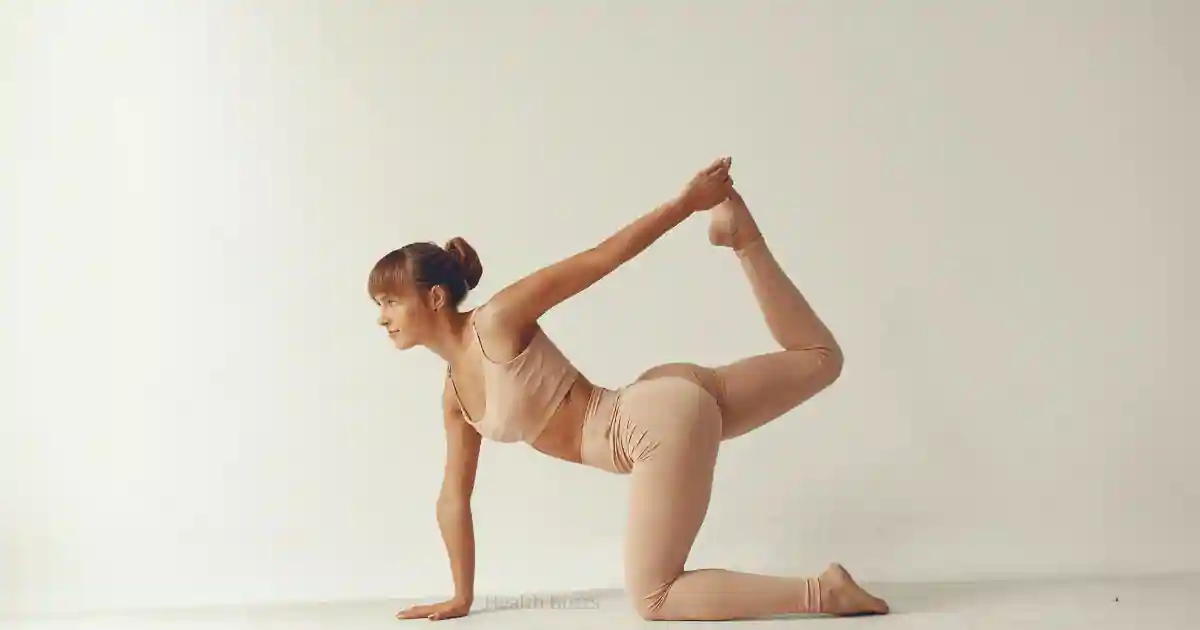Somatic yoga is a dynamic discipline that integrates the physiological, psychological, and sensory elements of asana practice. In this article, we unpack what somatic yoga is, its principles, and how it can revolutionize your approach to overall wellness.
If you’re seeking a form of yoga that emphasizes the connection between your physical and emotional states, somatic yoga might just be the pathway to a balanced and vibrant life.
What is Somatic Yoga?
Somatic Yoga, a transformative practice combining somatics, yoga, and mindfulness, promotes the deep connection between mind and body, focusing on internal sensations and movements.
Understanding Somatic Yoga
At its core, somatic yoga is an approach that focuses on experiencing the self from the inside out—a process that involves self-awareness and movement. Mind-body meditation, rooted in the principles of the physical, focuses on the soma, or the living body, in its wholeness. One of the leading principles of somati yoga is the concept of “pandiculation,” a term introduced by Thomas Hanna, the founder of Somatics.
This three-step process involves the contraction of a muscle, a slow release, and then a conscious relaxation, which helps reset the muscle’s resting length, alleviating chronic muscular contractions. The mind-body connection is a critical aspect of somati yoga. This approach maintains that stress or trauma can create patterns of muscular contraction, which can lead to stiffness, pain, and a diminished ability to move with ease.
By addressing these patterns through both physical movements and focusing the mind on the body’s sensations, physically yoga aims to alleviate these symptoms and restore a sense of well-being.
Somatic Yoga Benefits
The advantages of somatic yoga are numerous and can have a profound effect on one’s holistic health:
1. Improved Body Awareness and Proprioception
Somatic yoga encourages a deep understanding of one’s body. By tuning into the subtle movements and sensations of our muscles and joints, practitioners develop a heightened sense of body awareness and proprioception—our ability to sense the position, location, and movement of the body.
2. Increased Flexibility and Mobility
Somatic movements are often slow and mindful, allowing for a gentle exploration of one’s range of motion. As a result, gradual and steady progress can be made towards increased flexibility and enhanced mobility.
3. Stress Reduction and Relaxation
Somatic exercises are designed to be soothing and restorative, which can lead to reduced levels of stress and an increased state of relaxation. The practice often involves slow, deliberate movements that align with the breath, promoting a calming effect on the nervous system.
4. Relief from Chronic Pain and Tension
Chronic pain and tension can often be traced back to habituated patterns of muscular contraction. Somatic work aims to release and reprogram these patterns, offering long-term relief from pain and tension.
Practicing physically Yoga
Somatic yoga can be approached by anyone, regardless of their level of experience with yoga. It’s not about achieving advanced poses; instead, it’s about the journey within one’s body. Here are some approaches to get started:
– Basic Techniques and Exercises
Start with simple somatic exercises that focus on the major areas of muscular stress, such as the neck, shoulders, and lower back. The goal is not to stretch these muscles in the traditional sense but to engage in a process of pandiculation.
– Incorporating Breathwork and Mindfulness
Pairing breathwork with somatic movements can deepen the mind-body connection. Be mindful of the breath’s role in guiding and supporting the movements, which helps to foster a more holistic practice.
– Creating a Safe and Supportive Environment
The ambiance in which you practice somatic yoga is crucial. Ensure the space is free from distractions, and use props like blankets and bolsters to create a space that supports relaxation and ease of movement.
Integration with Other Wellness Practices
Somatic yoga can be a wonderful addition to your existing wellness routine:
– Complementing Traditional Yoga Practices
Integrating somatic yoga alongside traditional Hatha or Vinyasa yoga can enhance your overall yoga practice, providing a deeper understanding of the body’s movements and needs.
– Enhancing Mindfulness and Meditation Practices
Somatic yoga is an excellent complement to mindfulness meditation. Both practices encourage a present-moment awareness that is conducive to a peaceful state of being.
– Supporting Holistic Wellness and Self-Care Routines
Incorporate somatic movements into your daily self-care routine to address areas of muscular tension before they become chronic issues, thus facilitating a holistic approach to wellness.
Case Studies and Success Stories
Real-life examples can illustrate the transformative effects of physically yoga. It’s not uncommon for individuals to report significant improvements in their mobility, reduction in pain, and a newfound appreciation for their body’s capabilities after adopting a somatic practice.
Conclusion
Somatic yoga offers a powerful approach to wellness, emphasizing the intimate connection between body and mind. By incorporating somatic practices into your routine, you can enhance your quality of life and find a greater sense of balance and well-being. Begin your physical journey today, and discover the myriad ways it can support your personal health and growth.
Frequently Asked Questions
Principles of body awareness, mindful movement, and the mind-body connection guide somatic yoga.
Yes, somatic yoga can be adapted to accommodate individuals of all experience levels, including beginners.
The frequency of somatic yoga practice depends on individual preferences and goals. Consistency is vital, but even short daily practices can yield significant benefits.
Yes, somatic yoga techniques effectively manage chronic pain by releasing muscular tension and promoting relaxation.
While somatic yoga shares some similarities with conventional yoga, such as breath awareness and mindfulness, its emphasis on internal sensation and movement sets it apart as a distinct practice.
Hi there! I’m content writer and blogger. With over two years of experience, I’ve shared my passion for writing across various platforms. I firmly believe in the transformative power of words and look forward to sharing this journey with you. Enjoy my work!










